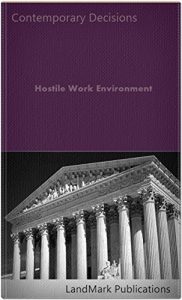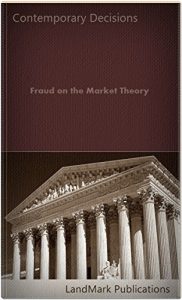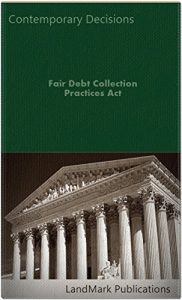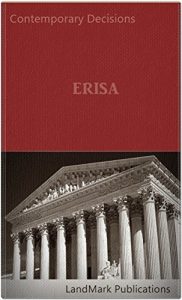THIS CASEBOOK contains a selection of 237 U. S. Court of Appeals decisions that analyze and discuss issues which arise in bankruptcy proceedings. The selection of decisions spans from 2004 to the date of publication.
When a debtor commences a bankruptcy case, a legal entity known as the "estate" is created. 11 U.S.C. § 541(a). The estate contains all of the debtor's property, subject to exceptions[ ]. Id. When a debtor files a case to reorganize under Chapter 11, the debtor becomes the debtor-in-possession of the estate and takes on the rights, powers, and fiduciary duties of a trustee. Id. §§ 1101, 1106-1108; see also CFTC v. Weintraub, 471 U.S. 343, 355 (1985). In The Matter of Woerner, (5th Cir. 2015).
The debtor-in-possession retains control over the property of the estate and must repay creditors according to the terms of a reorganization plan. 11 U.S.C. §§ 1115(b), 1123, 1142. The proponent of a reorganization plan—usually, but not necessarily, the debtor-in-possession—must provide a court-approved disclosure statement that contains "adequate information" about the assets, liabilities, and financial affairs of the debtor sufficient to enable creditors to make an "informed judgment" about the plan. Id. §§ 1121, 1125. Creditors may accept or reject the reorganization plan in a special voting process governed by the Bankruptcy Code. Id. § 1126. In The Matter of Woerner, ibid.
If the creditors accept the reorganization plan, it must then be confirmed by the bankruptcy court. Id. § 1129. The confirmation of the reorganization plan typically brings the bankruptcy case to an end. Id. § 1141. In The Matter of Woerner, ibid.
Ordinarily, when a bankruptcy court confirms a chapter 11 reorganization plan, the bankruptcy estate ceases to exist, and the debtor (or its representative) loses its authority to pursue claims on behalf of the estate. However, section 1123(b)(3)(B) of the Bankruptcy Code allows a reorganization plan to "provide for . . . the retention and enforcement by the debtor, by the trustee, or by a representative of the estate appointed for such purpose, of any . . . claim or interest" belonging to the debtor or to the estate. [Footnote citation omitted.] In The Matter of Gulf States Long Term Acute Care Of Covington, LLC, (5th Cir. 2015).
"A plan of reorganization is a binding contract between the debtor and the creditors and is subject to the general rules of contract construction and interpretation." In re New Seabury Co., 450 F.3d 24, 33 (1st Cir. 2006). Barraford v. T&N Limited, (1st Cir. 2015). The Court follows principles of contract interpretation to interpret a confirmed plan of reorganization. See Official Creditors Comm. v. Stratford of Tex., Inc. (In re Stratford of Tex., Inc.), 635 F.2d 365, 368 (5th Cir. Jan. 1981). In re FFS Data, Inc., (11th Cir. 2015).
. . .
When a debtor commences a bankruptcy case, a legal entity known as the "estate" is created. 11 U.S.C. § 541(a). The estate contains all of the debtor's property, subject to exceptions[ ]. Id. When a debtor files a case to reorganize under Chapter 11, the debtor becomes the debtor-in-possession of the estate and takes on the rights, powers, and fiduciary duties of a trustee. Id. §§ 1101, 1106-1108; see also CFTC v. Weintraub, 471 U.S. 343, 355 (1985). In The Matter of Woerner, (5th Cir. 2015).
The debtor-in-possession retains control over the property of the estate and must repay creditors according to the terms of a reorganization plan. 11 U.S.C. §§ 1115(b), 1123, 1142. The proponent of a reorganization plan—usually, but not necessarily, the debtor-in-possession—must provide a court-approved disclosure statement that contains "adequate information" about the assets, liabilities, and financial affairs of the debtor sufficient to enable creditors to make an "informed judgment" about the plan. Id. §§ 1121, 1125. Creditors may accept or reject the reorganization plan in a special voting process governed by the Bankruptcy Code. Id. § 1126. In The Matter of Woerner, ibid.
If the creditors accept the reorganization plan, it must then be confirmed by the bankruptcy court. Id. § 1129. The confirmation of the reorganization plan typically brings the bankruptcy case to an end. Id. § 1141. In The Matter of Woerner, ibid.
Ordinarily, when a bankruptcy court confirms a chapter 11 reorganization plan, the bankruptcy estate ceases to exist, and the debtor (or its representative) loses its authority to pursue claims on behalf of the estate. However, section 1123(b)(3)(B) of the Bankruptcy Code allows a reorganization plan to "provide for . . . the retention and enforcement by the debtor, by the trustee, or by a representative of the estate appointed for such purpose, of any . . . claim or interest" belonging to the debtor or to the estate. [Footnote citation omitted.] In The Matter of Gulf States Long Term Acute Care Of Covington, LLC, (5th Cir. 2015).
"A plan of reorganization is a binding contract between the debtor and the creditors and is subject to the general rules of contract construction and interpretation." In re New Seabury Co., 450 F.3d 24, 33 (1st Cir. 2006). Barraford v. T&N Limited, (1st Cir. 2015). The Court follows principles of contract interpretation to interpret a confirmed plan of reorganization. See Official Creditors Comm. v. Stratford of Tex., Inc. (In re Stratford of Tex., Inc.), 635 F.2d 365, 368 (5th Cir. Jan. 1981). In re FFS Data, Inc., (11th Cir. 2015).
. . .












